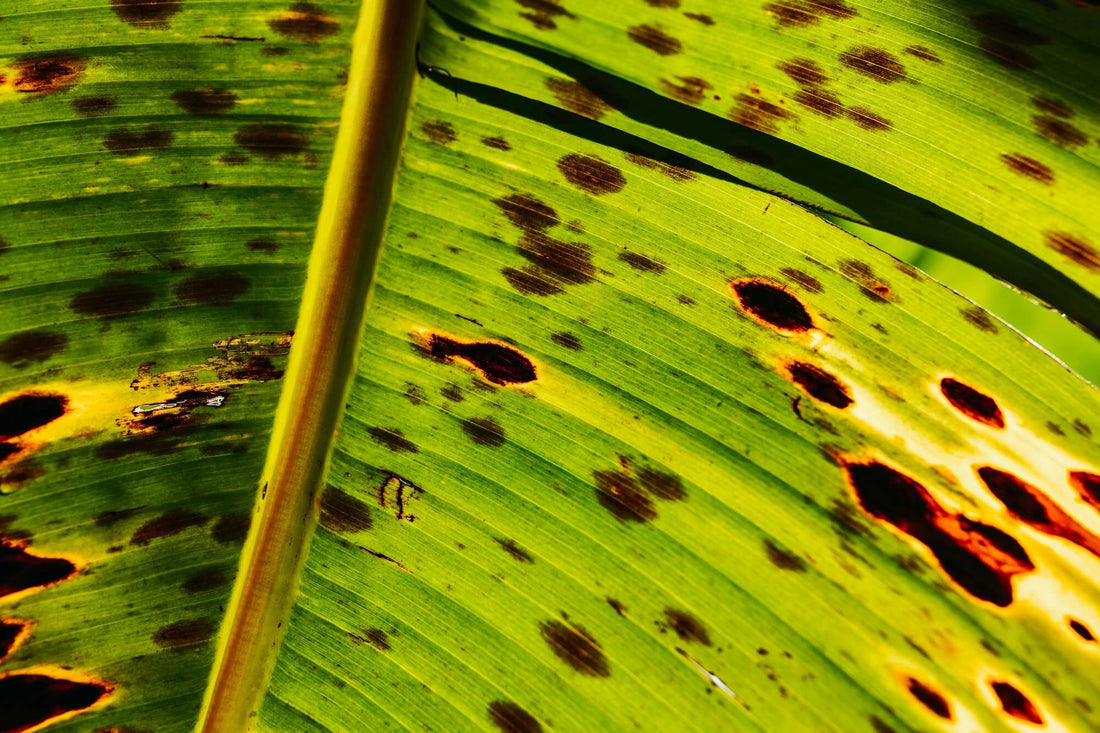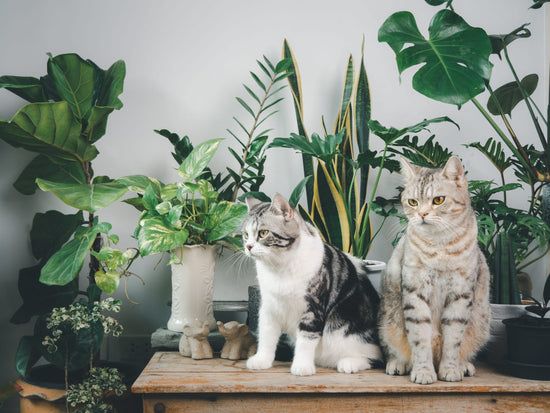Yellow spots on plant leaves are a common problem and can have many different causes. They are a visible sign that the plant is under stress or has health problems. This article looks at the most common reasons for yellow spots, how you can avoid them and what measures can help if your plant is affected.
Possible causes of yellow spots
-
water problems
- Overwatering: Waterlogging leads to a lack of oxygen in the roots, causing leaves to develop yellow spots or edges.
- Drought: Too little water causes desiccation stress, which can cause yellow spots.
-
nutrient deficiency
- Nitrogen deficiency: Leaves yellow evenly or show yellow spots, while the leaf veins often remain green.
- Iron deficiency: Young leaves develop yellow spaces while the veins remain green (chlorosis).
- Potassium or magnesium deficiency: Yellow spots first appear on older leaves.
-
pests
- Spider mites, thrips or aphids suck the plant sap, which can lead to yellow spots or localized discoloration.
-
diseases
- Fungal infections: Leaf spot or mildew often cause yellow spots that spread.
- Bacterial infections: These often manifest themselves in yellow, watery spots.
-
sunburn
- Direct sunlight can damage sensitive plants, resulting in yellow, burnt areas.
-
Unfavorable environmental conditions
- Drafts or temperature fluctuations: Stress caused by sudden temperature changes can cause yellow spots.
- Low humidity: Dry air can damage leaf tissue, especially in tropical plants.
Prevention of yellow spots
-
Watering correctly:
Water your plant regularly, but avoid waterlogging. Allow the top layer of soil to dry slightly before watering again. -
Ensure nutrient supply:
Fertilize your plants with a suitable fertilizer depending on the type and growth phase to prevent deficiency symptoms. -
Adjust location:
Make sure there is sufficient but indirect light and protect sensitive plants from direct sunlight. -
Pest control:
Check your plants regularly for pests and remove them early. -
Increase humidity:
Tropical plants benefit from regular misting or the use of a humidifier.
Measures for yellow spots
-
Check water balance:
Check the soil: is it too dry or too wet? Adjust watering accordingly. -
Fertilize:
If a nutrient deficiency is suspected, apply a balanced fertilizer. -
Fighting pests:
In case of infestation, biological agents such as neem oil or mild pest sprays can help. -
Treating diseases:
Cut off infected leaves and treat the plant with an appropriate fungicide or antibacterial agent. -
Change location:
If sunburn is the cause, move the plant to a bright but shaded location.
When is quick action necessary?
If yellow spots spread quickly, multiple leaves are affected, or the entire plant shows signs of stress (e.g., drooping leaves, stopped growing), you should act immediately. This may indicate serious problems such as root rot or a progressive disease.





